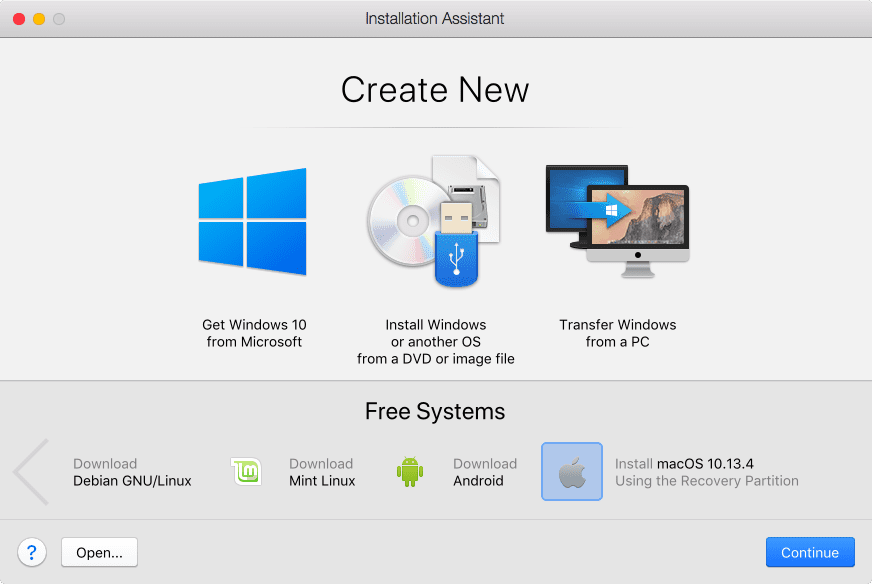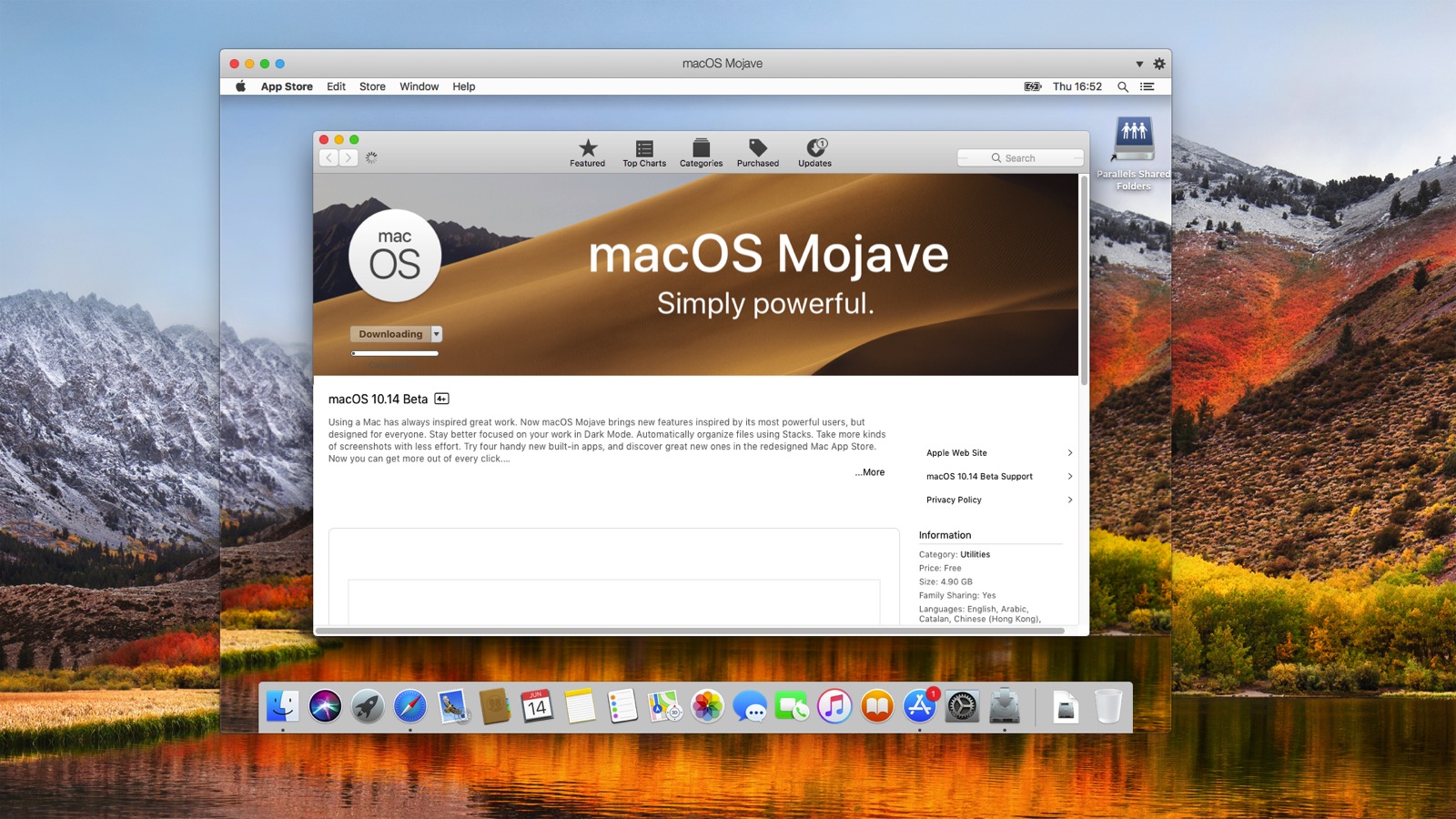

- #How find the size of parallels 13 vm in imac sierra install#
- #How find the size of parallels 13 vm in imac sierra upgrade#
- #How find the size of parallels 13 vm in imac sierra software#
From the menu bar select File→New Image→Blank Image.
#How find the size of parallels 13 vm in imac sierra software#
Hardware and Software used to test this answer: I should mention Allan`s answer would also appear to work. However, Arien does not have a flash drive and wants to do without.
#How find the size of parallels 13 vm in imac sierra install#
The answer is to install in the virtual machine the same as a physical Mac. Installing High Sierra without Using a Flash Drive FS0:\System\Library\Coreservices\boot.efi To boot from the virtual optical drive, enter the command shown below at the Shell> prompt. It is possible for a variety of reasons that you will boot to the UEFI Interactive Shell, as shown below. Manually Booting from the USB Flash Drive Note: With this version of VirtualBox, you can have High Sierra boot from APFS volumes.Īfter installation has completed and the virtual machine has shutdown, remove the High Sierra USB flash drive installer from the USB device filters. Note: If you get window similar to the one shown below, then click on the Cancel button. Using the Finder, eject the flash drive, then use VirtualBox to start the virtual machine.
In my case, the name was GenericU3 Mass Storage. Usually, the name of the USB flash drive will by something cryptic.
#How find the size of parallels 13 vm in imac sierra upgrade#
Note: Do not upgrade to USB 3.0 unless your Mac actually has USB 3.0 or higher.Īdd the High Sierra USB flash drive to the list of USB Device Filters. Attached the network adapter to Bridged Adaptor.For example, I made the following changes. Use the defaults for High Sierra, unless you see a need for a change. VirtualBox 6.1.4 r136177 (Qt5.6.3) The steps are given below.Ĭreate a virtual machine. This prompted me to post this answer here. However, the user Arien posted a duplicate question where High Sierra was to be installed in VirtualBox. I realize the OP was asking about Sierra. VirtualBox will automatically find the bootable volume and begin the installation process. Using the VirtualBox GUI, select the desired VM, click Settings, click Storage, click Add Hard Disk button, select Choose existing drive, and then select the VMDK file you just created.īoot your VM. Be sure to replace "joeuser" with your username in the command example below: sudo chown joeuser:staff Install\ macOS\ Sierra.vmdk Since it was created using sudo, root has ownership and rights. Add the VMDK to your VM and Bootīefore you can add the newly created VMDK to your VM, you need to take ownership of it. Now you can attach the VMDK to your VM and boot from it. The VMDK will be a very small file that simply points to disk you created in Step 1. So, for our purposes, the command would be (note the escaped spaces) VBoxManage internalcommands createrawvmdk -filename ~/Install\ macOS\ Sierra.vmdk -rawdisk /dev/disk7

The syntax of the command is as follows: VBoxManage internalcommands createrawvmdk -filename. To do this, we are going to use VirtualBox's "raw hard disk access" to create a pass through to the newly created drive image. The newly created image will need to be unmounted for the next step, so go ahead an unmount the disk. When it's done it will automount the new Volume and you should see it on your Desktop. dev/disk7s2 Apple_HFS /Volumes/macos-installation-mediaįinally, use createinstallmedia from the macOS Installer to create the installation image: sudo /Applications/Install\ macOS\ Sierra.app/Contents/Resources/createinstallmedia -volume /Volumes/macos-installation-media -applicationpath /Applications/Install\ macOS\ Sierra.app/Īllow it to finish. In my environment, mine was disk7 your's will likely be different. Pay attention to the disk identifier as you will need it in Step 2. You will get a message that looks similar to the one below. Next, mount the image hdiutil mount ~/macos-installation-media.sparseimage Using hdiutil create a sparse (expanding) disk image with a size of 6GB hdiutil create -size 6GB -fs HFS+ -volname "macos-installation-media" -type SPARSE ~/macos-installation-media In the steps below, assume the working directory is the user's home ( ~/). For this we are going to use VB's ability to access a "raw" drive through a VMDK which will act as a pass-through device that VB can recognize and mount. However, there's nothing that says it must be a physical USB device and not a disk image instead. We are going to use the createinstallmedia utility included with the macOS Install App to create a USB image. Newly created macOS VM created with standard settings (EFI, blank 60GB SSD, 128M video memory, 3D acceleration, 4GB RAM).VirtualBox 5.0+ (may work with older versions, but not tested).Installer for for macOS (El Capitan, Sierra, High Sierra, etc.).These instructions will guide you through the process of creating and using bootable media to install macOS in a VirtualBox VM.


 0 kommentar(er)
0 kommentar(er)
